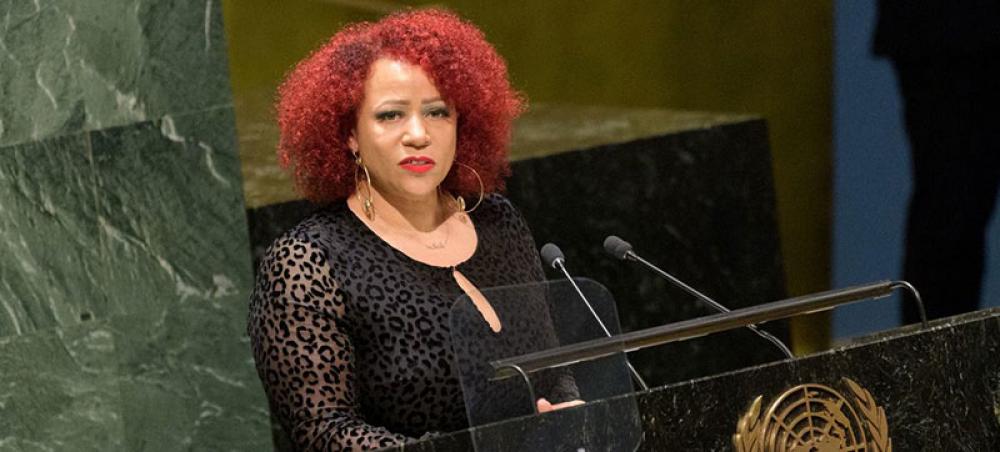Just Earth News | @justearthnews | 30 Mar 2022

Image: UN Photo/Manuel ElÃas
New York: The United Nations on Tuesday remembered the horrors of the transatlantic slave trade and its continued impact on the modern world, by honouring the tradition of resistance to slavery and unity against racism, through personal stories of courage.
In a commemorative event in the General Assembly Hall that included remarks from Member States from around the world, top UN officials denounced racism and discrimination.
In his opening remarks, the President of the General Assembly, Abdulla Shahid, called for greater commitments to social justice, and the celebration of all communities, irrespective of caste, creed or skin colour.
Standing in solidarity
He also spoke personally about his visit to the island of Gorée, off the coast of Senegal, which from the 15th to the 19th century, was the largest slave-trading centre on the Africa.
“Standing in solidarity with victims is the bare minimum we can do,” President Shahid said. “We must act to address these inequalities.”
Secretary-General António Guterres also spoke about the ongoing obstacles faced by people of African descent, who “are often among the last in line” for quality healthcare, education, justice and other opportunities.
He noted that ending racism is imperative for justice, adding that “This imperative implicates us all – we are all responsible to stand up and speak out in solidarity against racism wherever, whenever we encounter it.”
Stories of courage
This year’s theme for the commemorative event is Stories of Courage: Resistance to Slavery and Unity against Racism.
Some of them were recounted by Nikole Hannah-Jones, the keynote speaker at the event, who is also the creator of The New York Times’ 1619 Project, which aims to place the consequences of slavery in the United States, and contributions of Black Americans, more at the centre of the national narrative.
A descendent of slaves whose family went on to be sharecroppers in the southern US, Ms. Hannah-Jones told how her grandmother fled to “plant the seed of freedom that she would never see herself.”
Ms. Hannah-Jones noted that “as we remember our brutal enslavement by people who saw themselves as civilized, we must remember the fierce black tradition of resistance.”
She noted Zumbi dos Palmares in Brazil, Queen nanny of the Maroons in Jamaica and the independence of Haiti as some of the examples, stressing that “resistance remains the legacy of slavery.”
Equiano.Stories
Resistance is also the theme of Equiano.Stories, a film based on the memoir of Olaudah Equiano, who, after decades of slavery, was able to buy his freedom. He wrote about his life in The Interesting Narrative of the Life of Olaudah Equiano, Or Gustavus Vassa, The African.
His story is told through first-person video, still images, and text, as if Equiano had a cell phone in 1756. The result is an Instagram feed of a little boy growing up in a West African village, who is then kidnapped and sold into slavery.
“Equiano Stories connects us to the past in a way that is often hard to achieve, particularly as we are prone to see the past as something long ago, distant and unrecognizable,” President Shahid said.
The film was introduced by producer Mati Kochavi, in a special event organized by the Office of the President of the General Assembly, with participation from the Permanent Missions of Israel, Jamaica, Senegal, the United States, and the African Union.
New York City Mayor Eric Adams attended the event, in his first visit to the United Nations Headquarters since taking office in January 2022.
Addressing participants, Mayor Adams drew parallels between the evils shows in the film and global ills today, such as accelerating climate change, hunger and conflicts.
Urging multilateral action, he said “the UN must be more than a symbolic building, it must be a rallying cry.”